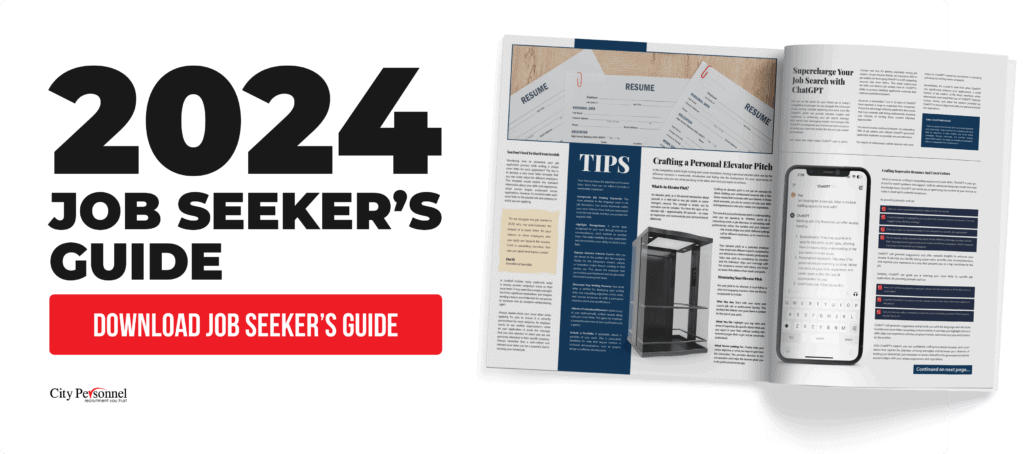Congratulations! You’ve just completed an important job interview. But hold on—you’re not done yet. Your performance during the interview is crucial, but how you follow up afterward can make all the difference.
Whether you’re a seasoned professional or a newcomer to the job market, knowing the dos and don’ts of post-interview communication is key to securing that dream job. In this guide, we’ll explore the best practices for following up after an interview, ensuring you leave a lasting impression without crossing any lines.
The Importance of the Interview Follow-Up
In a competitive job market, every detail counts. Following up after an interview is not just a courteous gesture; it can set you apart from other candidates. Post-interview emails are crucial, with 68% of hiring managers stating that no follow-up contact from applicants damages their chances of getting a callback, according to TopResume.
A timely, well-crafted follow-up shows your enthusiasm for the position and confirms your professionalism. It also provides another opportunity to highlight your qualifications and address any points you might have missed during the interview. Essentially, it’s your final pitch to the hiring team, so make it count.
Before we dive into the specifics, it’s essential to understand that the goal of a follow-up is to reinforce your suitability for the position while maintaining professionalism. Striking the right balance between being enthusiastic and respectful is key. In the following sections, we’ll break down the essential dos and don’ts to help you master the art of the interview follow-up.
The Dos of Following Up After an Interview
Sending a Thank-You Email Within 24 Hours
Timing is everything. One of the most effective ways to follow up after an interview is by sending a thank-you email within 24 hours. This quick turnaround shows that you’re prompt and genuinely appreciative of the opportunity. Your thank-you email should be concise, sincere, and free of errors. Begin by expressing your gratitude for the interviewer’s time and the chance to discuss the position.
Personalizing the Message
Generic emails are easily forgotten. Personalize your thank-you message by reflecting on specific points discussed during the interview. Mentioning particular topics shows that you were attentive and engaged. For example, if the interviewer talked about a significant project or challenge the company is facing, reference it in your email and briefly explain how your skills and experiences make you an ideal fit to contribute.
Struggling to write a follow-up email? Use this template to get started:
Subject: Thank You for the Interview
Hi [Interviewer’s Name],
I hope this email finds you well. I wanted to extend my gratitude for the opportunity to interview for the [Job Title] position at [Company Name] on [Date]. It was a pleasure to learn more about the team and the exciting work being done at [Company Name].
I particularly enjoyed our discussion about [specific topic discussed during the interview]. It gave me valuable insights into [relevant detail about the topic or company], and reinforced my enthusiasm for the role and how I can contribute to the team.
Thank you again for considering my application. I’m very excited about the possibility of joining [Company Name] and contributing to [specific project or goal mentioned during the interview]. Please let me know if there is any additional information I can provide to support my application.
Looking forward to hearing from you.
Best regards,
[Your Full Name]
[Your Phone Number]
[Your LinkedIn Profile]
[Your Email Address]
Following Up on a Specific Timeline
If the interviewer didn’t provide a timeline for the next steps, it’s appropriate to ask politely. If they did, make sure to follow up based on the given timeline. For instance, if they mentioned making a decision within two weeks, wait until that period has passed before reaching out. Express your continued interest in the role and inquire if there are any updates. Patience and respect for their process will reflect well on you.
The Don’ts of Following Up After an Interview
Bombarding the Interviewer with Multiple Messages
While enthusiasm is good, over-communication is not. Avoid bombarding the interviewer with multiple messages. One well-timed follow-up is sufficient. Sending too many emails or making excessive phone calls can come across as desperate or intrusive, which can harm your chances. Trust the process and give the hiring team the space they need to make a decision.
Using Generic Templates That Lack Personal Touch
Your follow-up communication should feel genuine. Using generic templates can make your message seem insincere and lazy. Instead, craft a personalized note that reflects your genuine interest in the position and appreciation for the opportunity. A thoughtful, customized message will leave a stronger impression than a template used for every application.
Appearing Desperate or Demanding
Confidence is key, but desperation is a turn-off. Avoid language that sounds demanding or overly eager. Phrases like “I really need this job” or “When can I expect to hear back?” can create a negative impression. Stay professional, express your interest, and maintain a positive tone. Remember, you’re building a professional relationship, not making demands.
Main Points to Remember When Following Up After an Interview
Navigating the post-interview follow-up can be tricky, but mastering it can significantly enhance your job search success. Always send a thank-you email within 24 hours, personalize your messages, and follow up based on the given timeline. Avoid bombarding the interviewer, using generic templates, and appearing desperate or demanding. By following these dos and don’ts, you’ll demonstrate professionalism, respect, and genuine interest—qualities that can set you apart from other candidates.
If you’re looking for more tips like these or need help with your job search, download our free Job Seekers’ Playbook.







